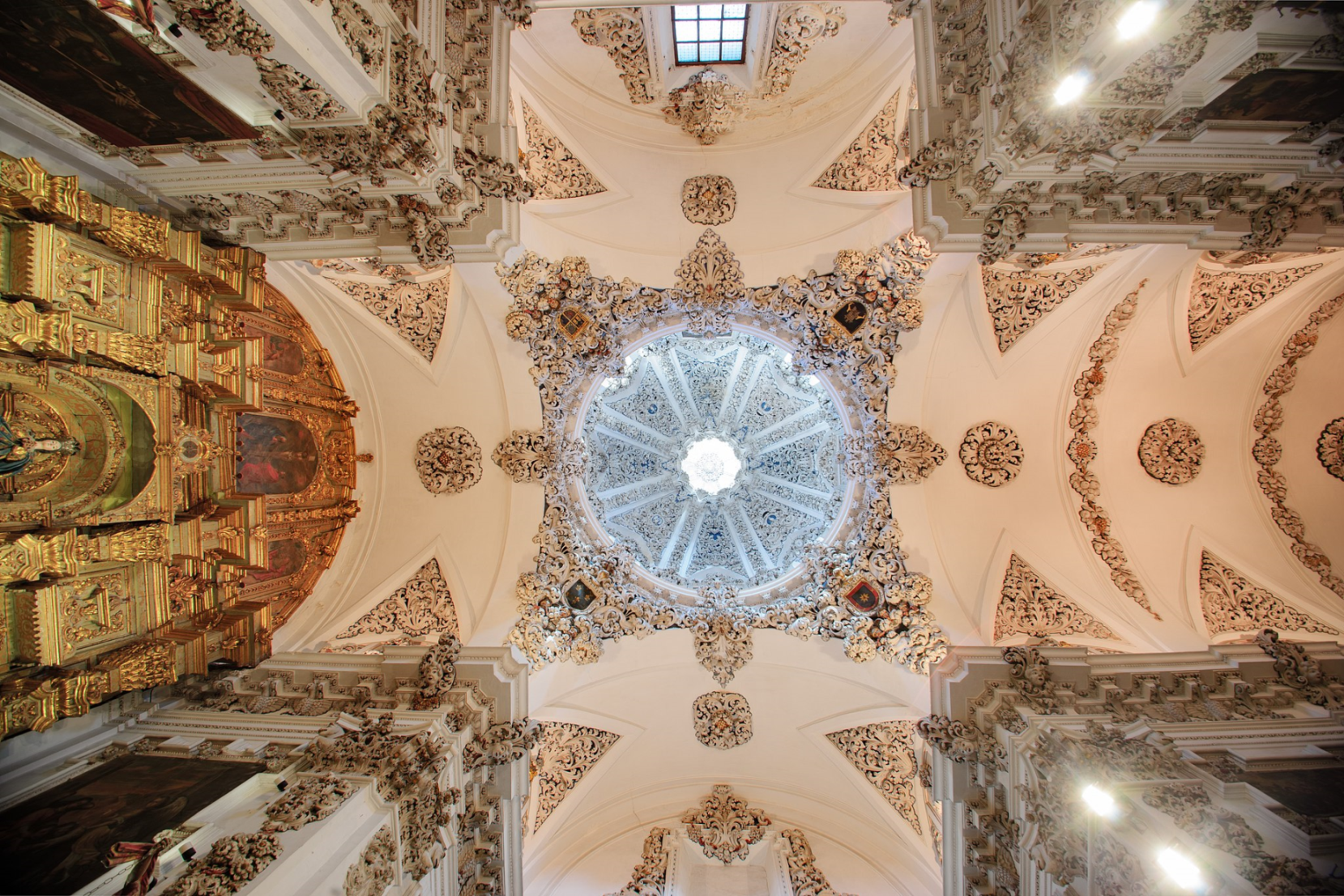
I just finished watching season one of the new Netflix series Warrior Nun. It’s a sci-fi adventure story where epic nun battles occur commonly and demons definitely aren’t metaphoric. I understand that it is based on a series of graphic novels.
Warrior Nun takes place in Spain and was filmed in the southern province of Andalusia. All the Spanish scenery is just gorgeous, but you’ll be un-surprised that I’m most interested in the churches. I was eager to start researching them pretty much from minute one. In fact, the show made me realize how much I’ve previously overlooked Spanish churches in general! I read, in an article I can’t find anymore, that the series was set in Spain specifically because of its beautiful churches.
The Churches of Warrior Nun
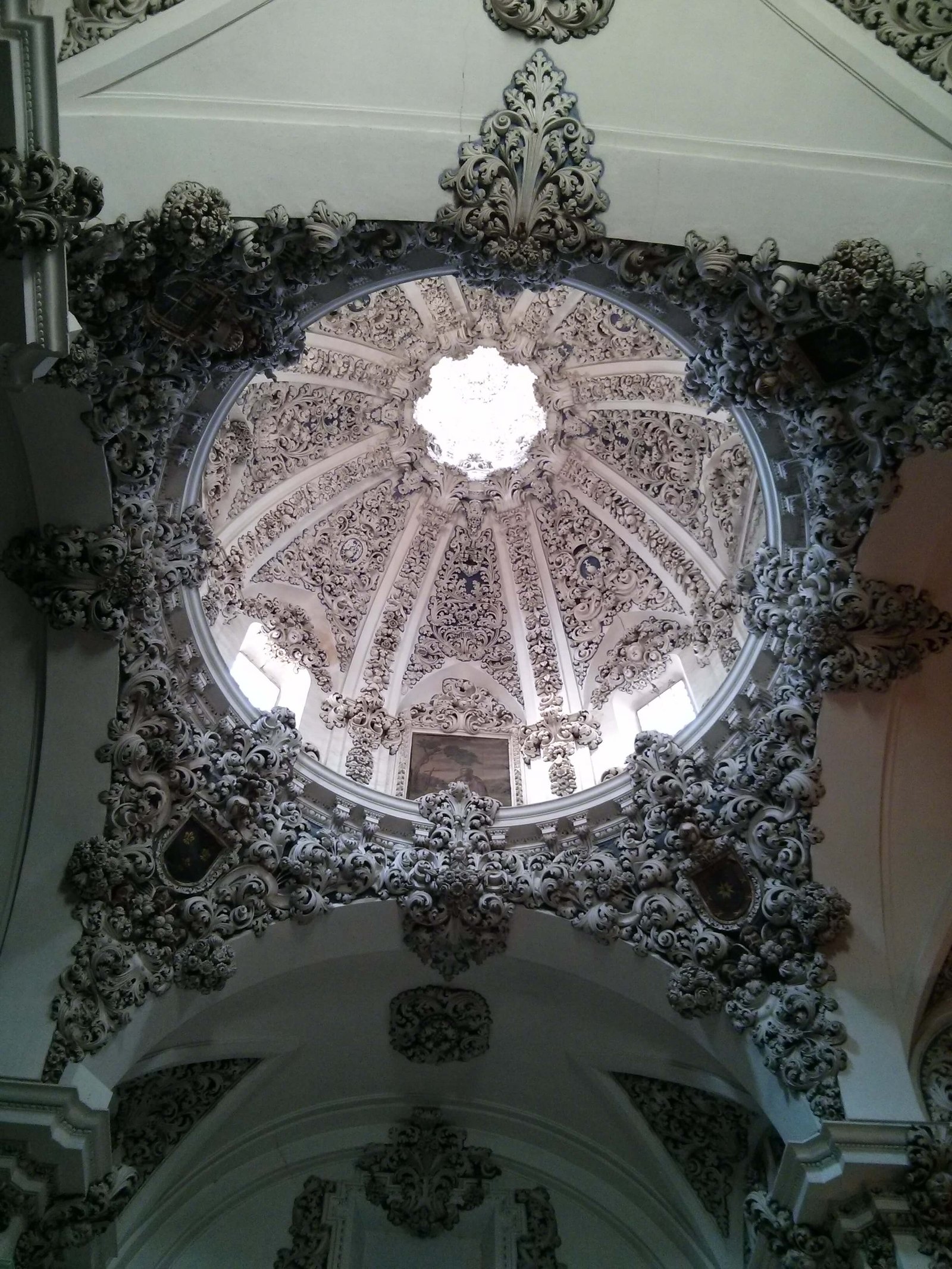
The website Atlas of Wonders identified the churches and other buildings that appear in season one of Warrior Nun. (This is definitely a site to bookmark for future reference.) Most of the churches aren’t well known, and none have much written about them. So, this is an nice opportunity to talk about some underappreciated places.
Although I won’t discuss them here, many beautiful, non-church locations also appear in the series, including the Alcázar in Seville and the Almodóvar del Río Castle in Córdova.
This article contains spoilers for all ten episodes of Netflix’s Warrior Nun.
San Juan de Dios, Antequera
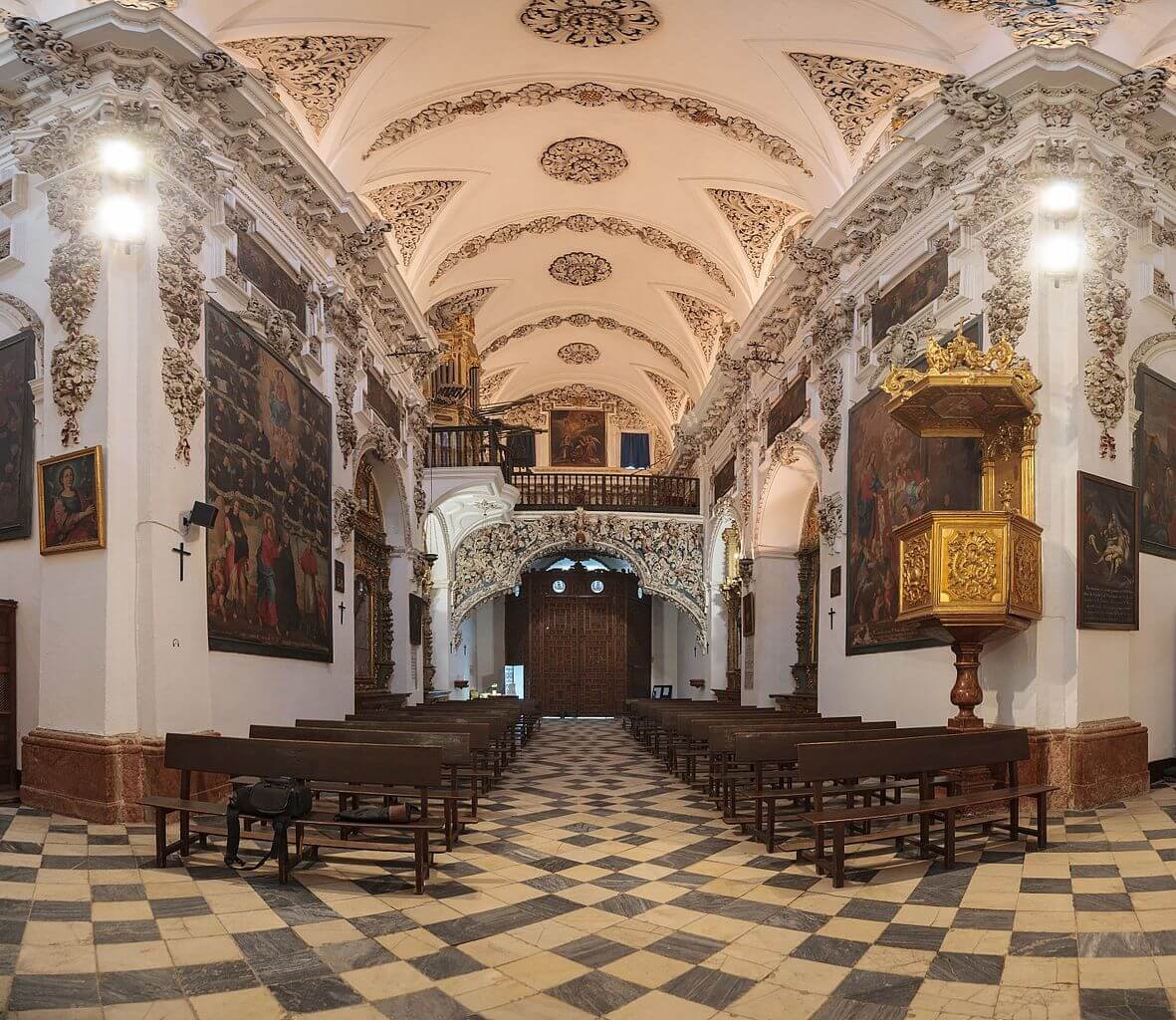
The first episode opens inside San Juan de Dios in Antequera. This church is 17th-18th century and very memorably elaborate. The Antequera tourism website calls its interior “a treasure of the Andalusian Baroque”. The dramatic events that set the plot in motion all happen inside San Juan de Dios.
The very first shots of the entire series show painted wood (polychrome) statues of Christ, angels, and saints. Next, the camera pans up to elaborate stucco work in the dome – Baroque at its finest – then all the way down the spectacular floor-to-ceiling altarpiece. The lighting makes it difficult to be sure, but it looks like the altarpiece is made of carved and gilt wood. It has two levels of niches containing statues. Both polychrome statues and massive gilt altarpieces are very typical of Spanish churches. Onscreen text reports that the show is set in present day Andalusia, Spain, but these opening few seconds of highly characteristic Spanish Catholic art have already sent that message loud and clear.
San Juan de Dios appears again halfway through episode seven and at the beginning of episode eight. In episode seven, we get a long look at this church in better lighting than before. The lacy, frosting-like stucco work we first saw in the dome turns out to also be encrusted the walls, sometimes around inset paintings. I also spotted more gilt wooden architectural elements in the transept, one on either side of the altarpiece. What I really like about this church is how all the white stucco balances out that massive golden altarpiece and prevents the interior as a whole from becoming too dark or overwhelming. This is not a large church; it doesn’t have aisles, and the transept is very shallow.
I don’t think we ever see the outside of San Juan de Dios, since the exterior views that correspond to these scenes were filmed elsewhere.
Royal Collegiate Church of Santa María la Mayor, Antequera
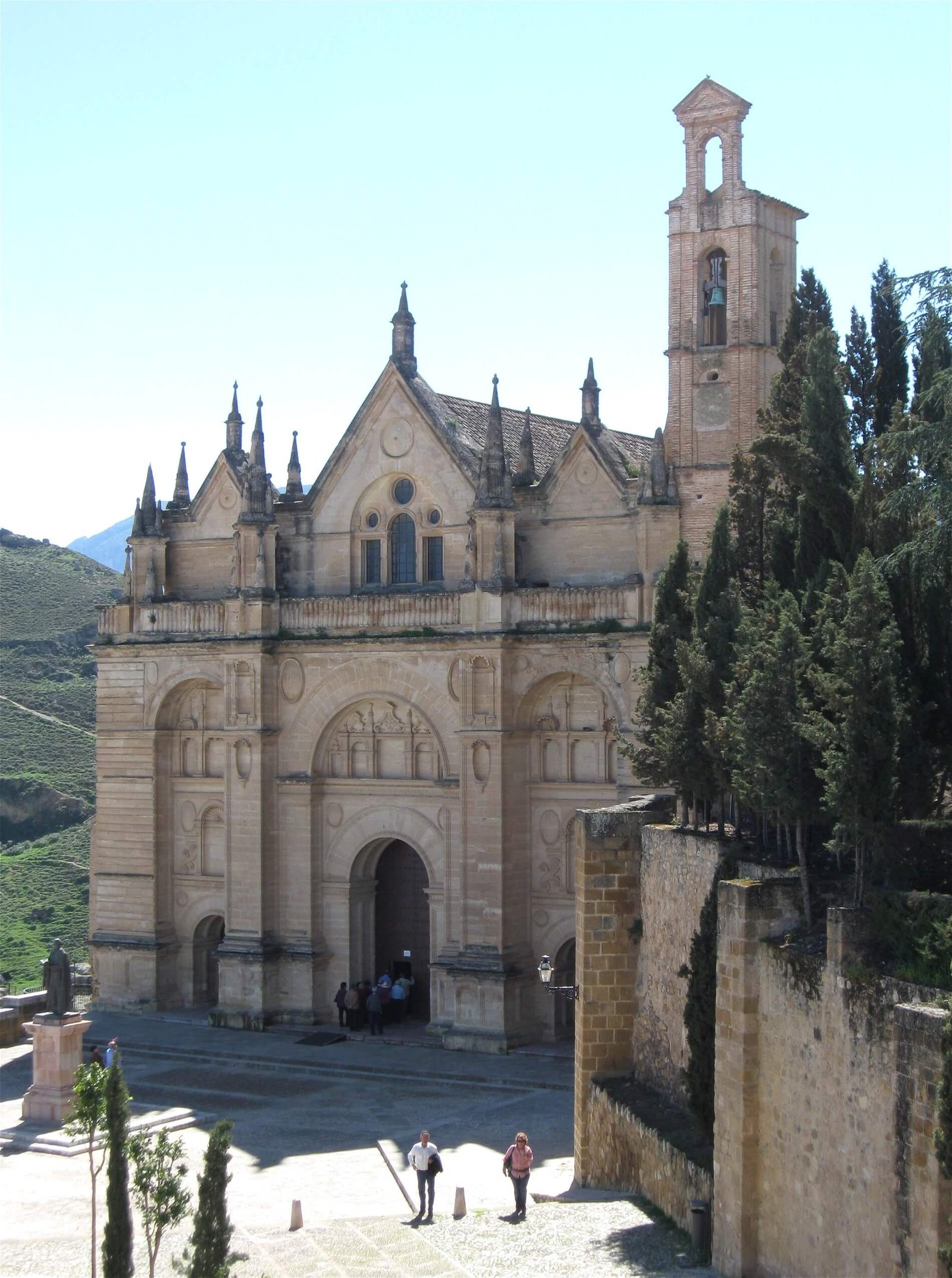
The Royal Collegiate Church of Santa María la Mayor in Antequera is the primary church in Warrior Nun. It was used as the headquarters of the Order of the Cruciform Sword (OCS), the society of fighting nuns at the heart of the story, it appears in almost every episode. Very little has been written about this church so far, but I suspect that will change if Warrior Nun becomes a big hit.
Santa María la Mayor is a Renaissance building – 16th century, according to Lonely Planet. The entry façade is appealing simple and solid in a way that reminds me of earlier Romanesque churches. There are three arched entry portals (doorways) with tall, blind (filled in) arches above them and plain piers between them. The theme of blind arches and columns repeats up the façade, but there is no decoration otherwise. Above this is a balcony, presumably accessed by another trio of doors in one of the three triangular gables. The statue outside is of Antequera-born poet Pedro de Espinosa (1578-1650).
Atlas of Wonders reports that Santa María la Mayor’s interior was heavily re-decorated for the show. Therefore, I won’t discuss any of the artwork or furnishings, since I have no idea what is original and what’s a prop. Andalucia.org says that the church is never heavily decorated.
From what I can tell, the inside is very simple and clean, with light-colored walls contrasting darker trim. Thick, solid columns dominate the space. There’s no altarpiece but instead a large baldacchin (canopy made of a permanent material) in the apse covering the altar and framing a large hanging cross. This area is really impressive in the episode four scene when the cardinal speaks in front of it. Elsewhere, Santa María la Mayor seems to have one aisle on each side of the nave; there are some small chapels off the aisles that may be set apart with decorative metal grates.
Lonely Planet also says that this church has a Mudéjar artesonado, which is “a ceiling of interlaced beams with decorative insertions”, but we don’t ever see it in the episodes. Mudéjar is a Spanish architectural style that’s part Gothic and part Islamic, a legacy of Spain’s time under Moorish Islamic rule.
Long tables for the sisters to use have been placed in the nave where the pews normally would be. To be honest, I find it a little strange that this order eats its meals and conducts its fight training inside a church. Real monasteries have separate buildings for daily activities and only use their churches for worship. However, once I’ve accepted that this is a show about nuns who regularly train for combat, I guess this isn’t too big a leap.
Strangely, Santa María la Mayor is the set that the show spends the most time in, but I have the hardest time getting a sense of it. It may be because it usually appears in the background of scenes but rarely in wide shots.
Chapel of the Virgin of El Socorro, Antequera
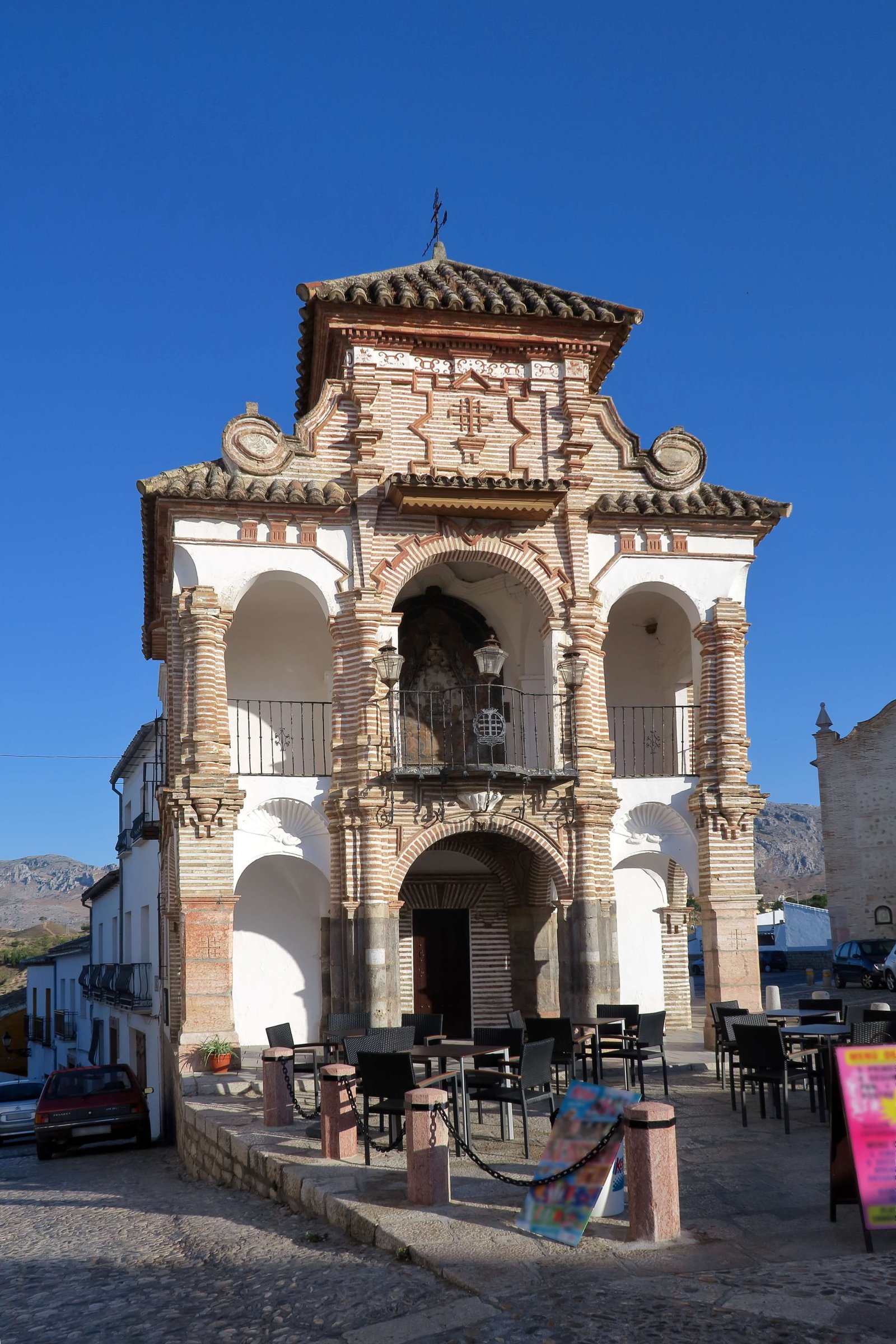
When Ava and Mary visit a village in episode six, they spend the night in a small local church – the Chapel of the Virgin of El Socorro (Our Lady of Help) in Antequera. The scene starts with a nice shot of the girls entering from Portichuelo Square with another church, Santa María de Jesús, visible on the right.
The Chapel of the Virgin of El Socorro is really interesting on the outside. Its bundled columns, main arches, and gable have alternating bands of red and white bricks, which contrast against white walls. The roof is made of terra cotta tiles characteristic of the Mediterranean. According to Andalucia.org, the chapel was built in 1715 in a traditional Andalusian style.
Inside, the church is Baroque, but on the calmer side as compared to San Juan de Dios. It’s dominated by a massive, gilt (I think) altarpiece with a single focal point – a statue dressed in white. This is presumably the Virgin for whom the church is named. We never see her up close, but her white dress, white veil, and large crown are striking even from a distance. Dressing statues of the Virgin Mary in real clothing is traditional in some Catholic cultures. On either side of the nave, there are two more carved and gilt niches. We later see later that one contains a polychrome statue of a nun with a halo.
This episode includes a very cool scene where the church is completely dark at night, but the Virgin Mary’s niche and two others are lit from within, so they appear to glow on their own accord. This piece of visual theatricality reminded me strongly the Met’s 2018 exhibition Heavenly Bodies: Fashion and the Catholic Imagination, which also dealt with the tradition of dressing Virgin Mary statues. Elsewhere, the chapel has white walls with subtle stucco decoration to balance out all that gilding and detail. It isn’t open to the public.
Málaga Cathedral, Málaga
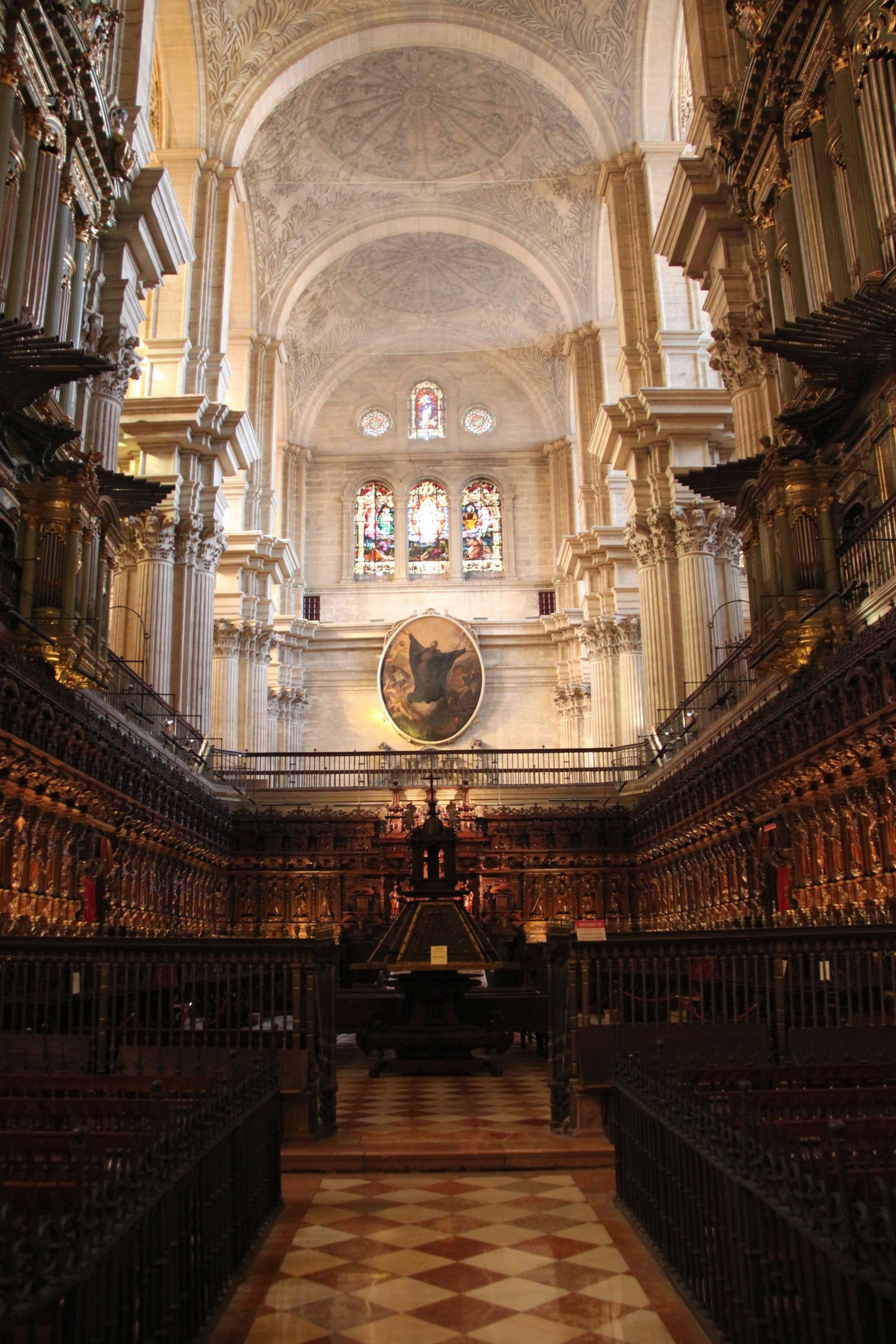
The final two episodes of Warrior Nun (episodes nine and ten) take place at the Vatican during a Papal conclave to elect a new Pope. In these episodes, the choir (altar end) of Málaga Cathedral stands in for the place where the College of Cardinals meets. In reality, the conclave happens inside the Sistine Chapel, which looks nothing like this. But I’m not complaining, because Málaga Cathedral is a joy to look at!
Unlike the smaller, local churches that appeared earlier in this series, Málaga Cathedral is really grand. We never see the interior in its entirety, but the monumental columns give an impressive sense of scale. The real highlight is the set of gorgeous choir stalls ringing the choir. The Andalusia tourism website, which agrees with my assessment of the choir stalls’ greatness, says that they are the work of local sculptor Pedro de Mena (1628-1688). You can best appreciate their overall effect about thirteen minutes into episode nine, while some of the carving appears a little more closely during the opening minutes of episode ten. You can see them in even better detail below. In both scenes, all the rich, dark, elegantly-carved wood makes a great contrast to the cardinals’ bright red capes and hats.
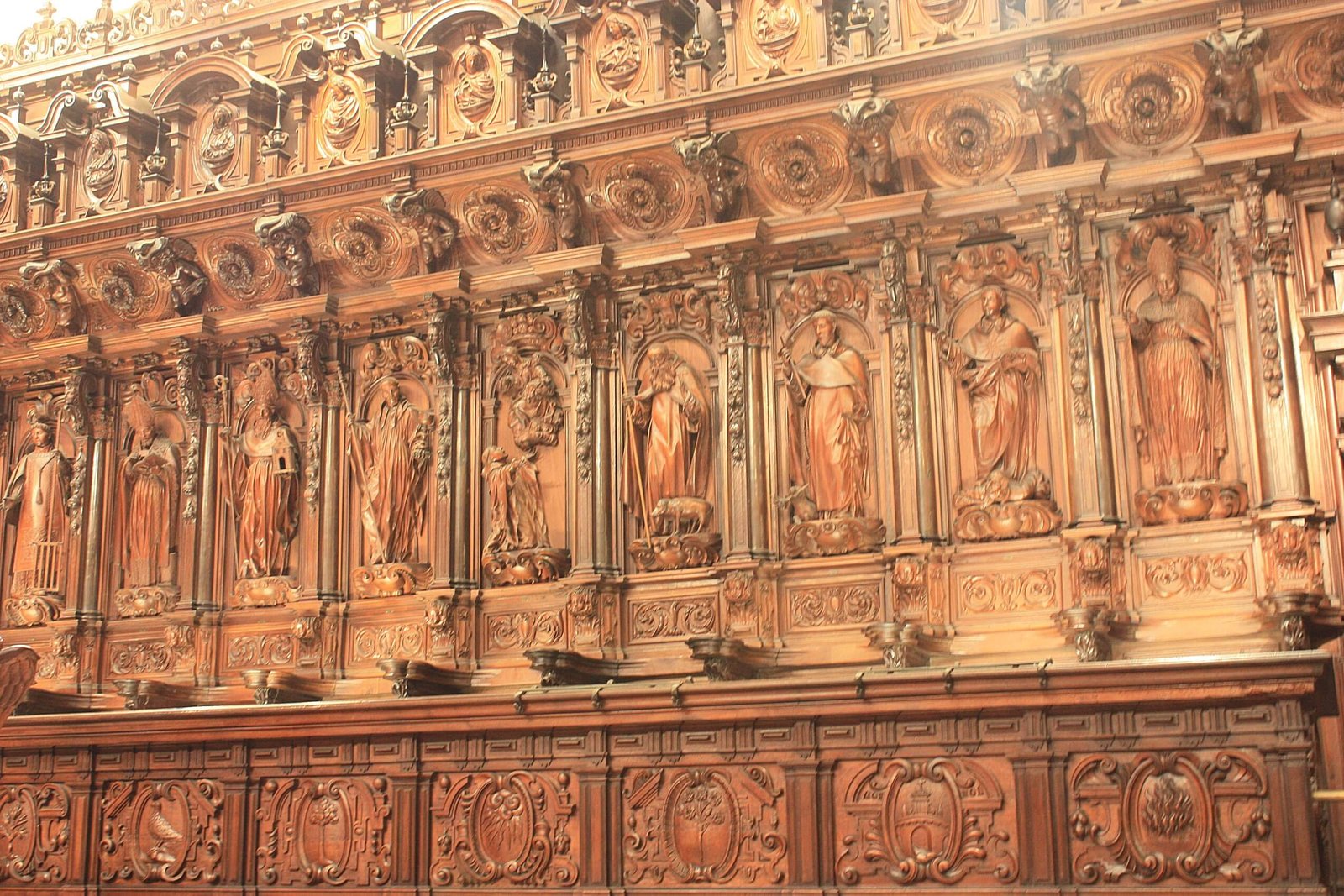
The Andalusia tourism website gives Málaga Cathedral’s dates of construction as mid-16th century to late-18th century, characterizing it as part Gothic, part Renaissance, and part Baroque. Of all the churches we see in Warrior Nun, this one is clearly the most like the Gothic basilicas I’m used to. We never see the exterior of Málaga Cathedral. Instead, a couple of exterior images of the actual St. Peter’s in Rome set the scene, and then lots of Andalusian locations stood in for various parts of the Vatican.
Warrior Nun
I liked Warrior Nun. It’s really exciting, and I definitely recommend it, although I’m still not quite sure what happened at the end. Check it out for the beautiful churches, romantic Spanish scenery, cool fight sequences, and abundant girl power. Don’t let the religious aspect scare you off. Catholicism is the setting, not the message, and the show is not aimed at a specifically Catholic audience. The mind-bending, pseudo-Christian mythology is completely invented, so knowledge of the Bible is unnecessary. All ten episodes of the season one have been available on Netflix since July 2, 2020.


